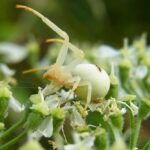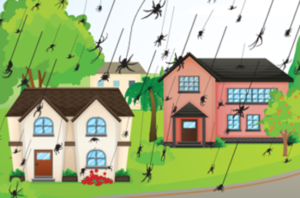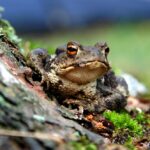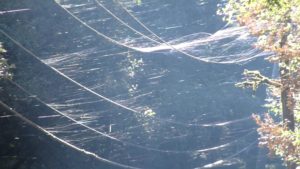Spiders crawl around your house, some jump across your lawn — and others take to the air on transoceanic flights. With airships made from strands of silk, some species of tiny spiders take to the air in a process called “ballooning”.
Ballooning spiders were first documented in the 17th century but until the 21st century, scientists had no idea exactly how these spiders take to the air. So modern day researchers, in Berlin, used a wind tunnel to approximate conditions that would cause spiderlings to balloon. What they observed was fascinating.
 The spiders (crab spiders) first sensed the wind through hairs on their legs. Then, they further tested the wind conditions by lifting one or both, of their front legs into the air for 5 to 8 seconds. They’d repeated the process, until they were satisfied with the wind conditions, each time rotating their bodies in the direction of the wind.
The spiders (crab spiders) first sensed the wind through hairs on their legs. Then, they further tested the wind conditions by lifting one or both, of their front legs into the air for 5 to 8 seconds. They’d repeated the process, until they were satisfied with the wind conditions, each time rotating their bodies in the direction of the wind.
When the spiders were finally ready to take to the air, they raised their abdomens and spun their silk — each strand around 2 to 4 meters long (6.6 to 13 feet) — eventually forming a triangular kite of sorts. With enough drag from the silk against the wind, the spiders used these thin, silky sails to take off. During takeoff and throughout the flight, the spiders kept their legs stretched out, just like human parachutists.
This is all well and good but how do researchers explain ballooning in the absence of wind?
According to a different set of researchers out of Berlin, drag forces from wind or thermals are not the only things responsible for this airborne scattering of spiders. Electric fields or electromagnetic fields, at strengths found in the atmosphere, can also trigger ballooning behavior and provide lift in the absence of any air move ment.
ment.
So, why do spiders take to the air? Ground travel is just too hazardous.
Ballooning as a mode of travel is primarily used by newly hatched baby spiders to escape being cannibalized by their siblings and fed upon by predators. Adult spiders sometimes resort to it when resources are scarce, or to escape hazards (fires, floods and predators).
In casting their fate to the wind, spiders may drop just a few feet from their takeoff site, or they might get caught in a jet stream that takes them across oceans. But, in all cases, they go where the wind takes them. Fair winds little spiders!
The spiders are falling! The spiders are falling!
Here are some tips to prevent these flying, floati ng and falling invaders from getting into your home. For the answer check out Corky’s Pest Control’s Spiders Control Service,
ng and falling invaders from getting into your home. For the answer check out Corky’s Pest Control’s Spiders Control Service,
 800-901-1102
800-901-1102
0 Comments